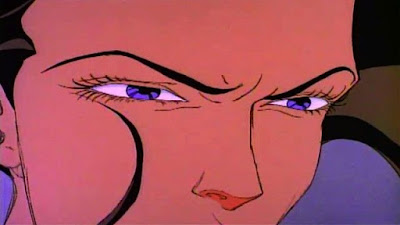Pollice Verso by Jean-Léon Gérôme
Pollice Verso or "with a turned thumb" is used as a reference for the gesture of turning ones thumb to determine the fate of the fallen gladiator in battle. Ridley Scott said this painting inspired him to make the movie Gladiator and its not just because of the subject matter, its also because Jean-Léon Gérôme's paintings are considered to depict time in a way that feels very cinematic.
Composition
"What is the essence of the director's work? We could define it as sculpting in time."- Andrei Tarkovsky
Jean-Léon Gérôme paints like a film maker and by that I mean he paints the "in between" moments of time that don't exist to the naked eye outside of film but somehow he does exactly this by painting several different moments of time within this piece.
The most obvious suggestion of the passage of time is how the sun rays move across the painting. They feel like pin drops of sunlight that slowly move along the painting as the sun peers around the corner of the back wall of the Colosseum. They give a sense of calm over the whole piece. This helps create the tone of the bottom part of the painting and defines the passage of time here in this area. Along with the sun rays we also see the fallen gladiators and their gestures feel slow in this time frame.
We then look upwards to the women in the top right and the crowd behind them and their rhythm is the complete opposite its full of energy and conviction as they put their thumbs down to determine the fate of the combatant. If we were to edit this painting together like a film we might start out with this depiction of the scene here but also visit each group of people and their reaction to create the suspense in the scene. For example we may start out with a slow shot of the gladiator placing his foot on the throat of his opponent and looking up and over to the crowd. Our next shot might be of the frantic crowd of virgins making gestures to kill the fallen gladiator, Our next shot might then be lingering again on the gladiator on the ground as he reaches out to the crowd for mercy.
Our final shot would be of the emperor studying the scene while he eats grapes from his bowl. Behind him then our eyes can linger in the crowd which feels like they all have a general movement of back and to the left which does not draw too much attention to itself and lets your eye rest here. Their positions along the background are all even as if they are all standing at the same height or sitting down.
Color
The overall tones and colors he uses feels like for the most part they stay in the reds, browns and purples along the bottom. He uses a light opague red for the skin of the opponent begging for mercy and purple on his blood that stains the sand. The skin of the fallen gladiator is pale but still is within the orange range of colors. The same goes for most of the painting but he also uses a lot of different complementary colors to this range with blue greens in the ornamentation of the drape on the wall and the clothing of several spectators. However these complementary colors stay within the same color range.
Its interesting though that he doesn't save these complementary colors for the focal point and they don't distract. They all feel coherent even though they are all along the color range.
Value
The brightest value grouping is for the group of white robed virgin women to the right of this picture since this is where he wants us to look after we look at the Gladiators. Notice in no other part of the piece is their this many people with the same color robe next to one another. The rest in the background are a variety of different colors of red blues greens and browns.
The other main bright value range is in the figures in the foreground. These characters are laid on top of the darker background of the Colosseum wall to make him pop forward. These two lighter value groups are separated by the large curving wall of the dome. Which creates a very striking and dramatic shape across the page. The final light value group is in the top left corner. This is the last place our eye would go to and is a resting spot for the eye. The lighting and how the sun cuts across the crowd helps define this large dark shape and gives focus to the image. If the whole crowd was in the same value range the sense of time passing would not be achieved and some focus would be lost.
Link:
http://penelope.uchicago.edu/~grout/encyclopaedia_romana/gladiators/polliceverso.html
https://en.wikipedia.org/wiki/Cultural_depictions_of_ravens
http://blogs.getty.edu/iris/jean-leon-gerome-from-gladiator-to-the-matrix/
http://muddycolors.blogspot.com/2016/12/regeneration_13.html




Comments
Post a Comment